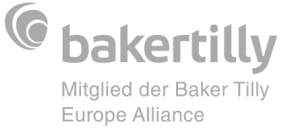news
Categories
19. June 2025
Reading Time: 3
Min.
news
Startups – different funding opportunities
Startups require not only a good idea and team, but also funding to support product development, marketing, sales and growth. Depending on the stage of development, needs and long-term strategy, a startup can choose from several basic forms of funding. Below we look at each of these in detail.Startups – different funding options.
1. Personal savings and funds from relatives (Bootstrapping)
This is self-financing through the founder(s) personal funds, or through loans from family and friends. It is also called “bootstrapping”.
Details:
- The most common first source of funding.
- Suitable for startups with minimal costs (MVP, initial testing).
- No outside management involvement.
Pros:
- Full control over the business.
- Flexibility in decision making.
- No share or interest due (especially with help from relatives).
Minuses:
- Limited amount of funds available.
- Risk of losing personal assets.
- Pressure on personal relationships in the event of failure.
2. Angel Investors
Angel investors are wealthy individuals who invest personal funds in promising early-stage startups in exchange for equity.
Details:
- They are often former entrepreneurs or industry professionals.
- Investments range between €10,000 and €500,000.
- In addition to money, they often offer mentoring, contacts and strategic advice.
Pros:
- Support from experienced professionals.
- More flexible and ‘human’ terms than funds.
- Suitable for early stage development.
Minuses:
- A percentage of ownership is granted.
- Investor can have influence on key decisions.
- Follow-on funding is not always provided.
3. Venture Capital (VC)
VC funds invest money from multiple investors in high-growth startups with the potential for scalable success.
Details:
- Funds typically invest larger amounts – from €500,000 to millions.
- The process involves due diligence, negotiations and contracts.
- They expect high returns and often require an exit within 5-7 years (via sale or IPO).
Pros:
- Access to significant capital.
- Reputation and credibility from the market with VC backing.
- Help to grow the business globally.
Minuses:
- Long negotiation process.
- Requirements for rapid growth and scalable business model.
- Loss of some control (usually through board of directors).
4. Crowdfunding
Raising funds from a wide audience through online platforms in exchange for advance access to the product, rewards, or even shares in the company (equity crowdfunding).
Details:
- Platforms: Kickstarter, Indiegogo, Seedrs, Fundable, StartEngine.
- Suitable for innovative products and hardware.
- Can be a reward, equity or donation model.
Pros:
- Product validation from real market.
- Attracting first customers and fans.
- Doesn’t always have to give equity.
Minuses:
- Requires a serious marketing campaign.
- Failure is public.
- Platforms keep a percentage of funds raised (5-10%).
5. Bank Loans and Government Programmes
Financing through traditional bank loans, microcredit, or government/European entrepreneurship support programmes.
Details:
- Suitable for businesses with clearer histories or assets.
- Require a business plan, and often collateral.
Pros:
- Full ownership is retained.
- Fixed payments and interest – clarity in budget.
- Some subsidies not repayable.
Minuses:
- High document, guarantee and history requirements.
- Risk of failure to repay.
- More suitable for established businesses.
Choosing the right funding for a startup depends on the stage of development, the needs of the company and the entrepreneur’s willingness to cede control or ownership. It is important to conduct a thorough analysis of the various options, looking not only for capital but also for a strategic partner to contribute to the sustainable growth of the business. Successful startups don’t always rely on the biggest funding, but on the right one.
TPA Bulgaria
+359 2 981 66 45/46/47
office@tpa-group.bg
128, G.S. Rakovski str, floor 2
1000 Sofia








